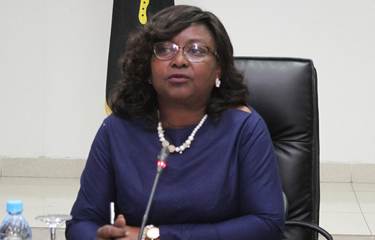Oil-rich Angola will in the 2019-2020 fiscal year introduce a new fuel subsidy to support its agriculture and fisheries sectors, as the government strives to achieve food security and reduce national malnutrition levels.
Angola’s Ministry of Finance said the fuel subsidy represents “an important stimulus for strengthening the country’s productive sectors," according to Bloomberg. The ministry has provided no details on what the subsidy will consist of or how it will be allocated, distributed, or sold to fishing companies or communities.
Despite the scanty details, previous reports indicated the government, which earlier in 2019 proposed a USD 35.2 billion (EUR 32.1 billion) 2019-2020 national budget, has committed to meet up to 45 percent of fuel expenses of the agriculture and fisheries sector, although a decision on the delivery system is yet to be finalized.
According to the Food and Agriculture Organization (FAO), Angola is already providing fuel subsidies to its artisanal and small-scale fisheries, which account for nearly 50 percent of the country’s total fishery production, estimated at more than 532,000 tons in 2017.
Angola is the second-largest oil producer in sub-Saharan Africa after Nigeria, with a daily output of approximately 1.37 million barrels of oil, though it imports 85 percent of its fuel requirements. The country reportedly spent an estimated USD 805 million (EUR 734 million) in fuel subsidies in 2013, the last year for which reliable data is available.
A large share of the planned new fuel subsidy for the fisheries sector is expected to be directed to artisanal fishing, which supports nearly 50,000 people who are organized in groups and use nearly 9,000 powered boats.
Angola has seen per capita consumption of fish drop from 18.6 kilograms in 2013 to 14.7 kilograms last year, which may be partially as a result of climate change. The country has experienced prolonged droughts and Namibe, an area of Angola with some of the country’s most concentrated fishing operations, has been one of the worst-hit by persistent dry weather conditions, with the FAO previously saying the province, alongside Cunene, experienced “a reduction in food production in 2018 and resulted in stressed food security conditions.”
“Higher food prices are further aggravating the situation and the current unfavorable production prospects negatively weigh on food security outlook,” the FAO said in its report on Angola.
The Angolan government said it sees fuel subsidies as a means to prop up its artisanal and small-scale fisheries sector – a step it says is critical to achieving food security and providing a source of income to coastal communities that have no alternative means of earning a living. A subsidy would cut down on the cost of fishing and allow fishermen to scale up production and keep the price of fish affordable, which is especially important for those who rely on the resource as their sole source of food, the government said. Angola’s current annual fish demand is estimated at 90,000 tons but imports stand at less than 40,000 tons because of a “lack of mackerel,” the most consumed species in the country, according to the government.
The announcement of the new fuel subsidy for the fisheries sector in Angola coincides with a push by the United Nations for the removal of the grants, which the United Nations Conference on Trade and Development (UNCTAD) says “promote illegal fishing, overfishing, and overcapacity.”
“The discussions to end certain fisheries subsidies [and] government support schemes for the fisheries sector that contribute to illegal, unreported, and unregulated fishing, overfishing, and overcapacity have been 20 years in the making and are yet to be finalized,” UNCTAD said in a statement early this month.
Photo courtesy of Angop







